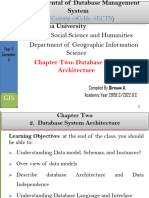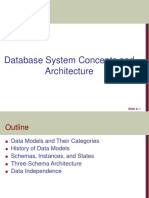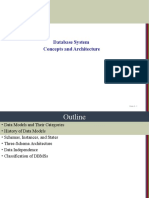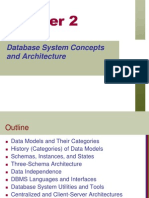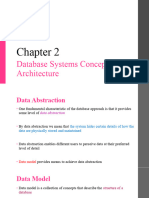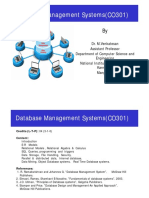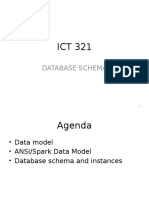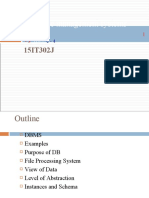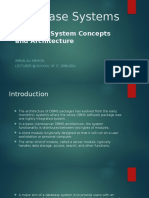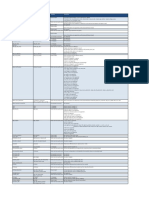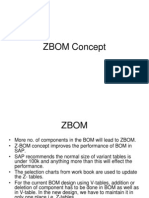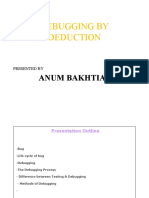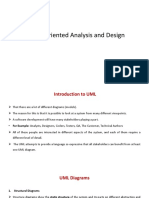0% found this document useful (0 votes)
42 views64 pagesChapter 2 Database System Concepts and Architecture
Chapter 2 discusses database system concepts and architecture, focusing on data models, schemas, and the three-schema architecture. It outlines the different levels of data representation (external, conceptual, and internal) and the importance of data independence. Additionally, it categorizes data models into conceptual, physical, and implementation types, and explains the roles of DBMS languages in defining and manipulating databases.
Uploaded by
gesgisermiasCopyright
© © All Rights Reserved
We take content rights seriously. If you suspect this is your content, claim it here.
Available Formats
Download as PPT, PDF, TXT or read online on Scribd
0% found this document useful (0 votes)
42 views64 pagesChapter 2 Database System Concepts and Architecture
Chapter 2 discusses database system concepts and architecture, focusing on data models, schemas, and the three-schema architecture. It outlines the different levels of data representation (external, conceptual, and internal) and the importance of data independence. Additionally, it categorizes data models into conceptual, physical, and implementation types, and explains the roles of DBMS languages in defining and manipulating databases.
Uploaded by
gesgisermiasCopyright
© © All Rights Reserved
We take content rights seriously. If you suspect this is your content, claim it here.
Available Formats
Download as PPT, PDF, TXT or read online on Scribd
/ 64
